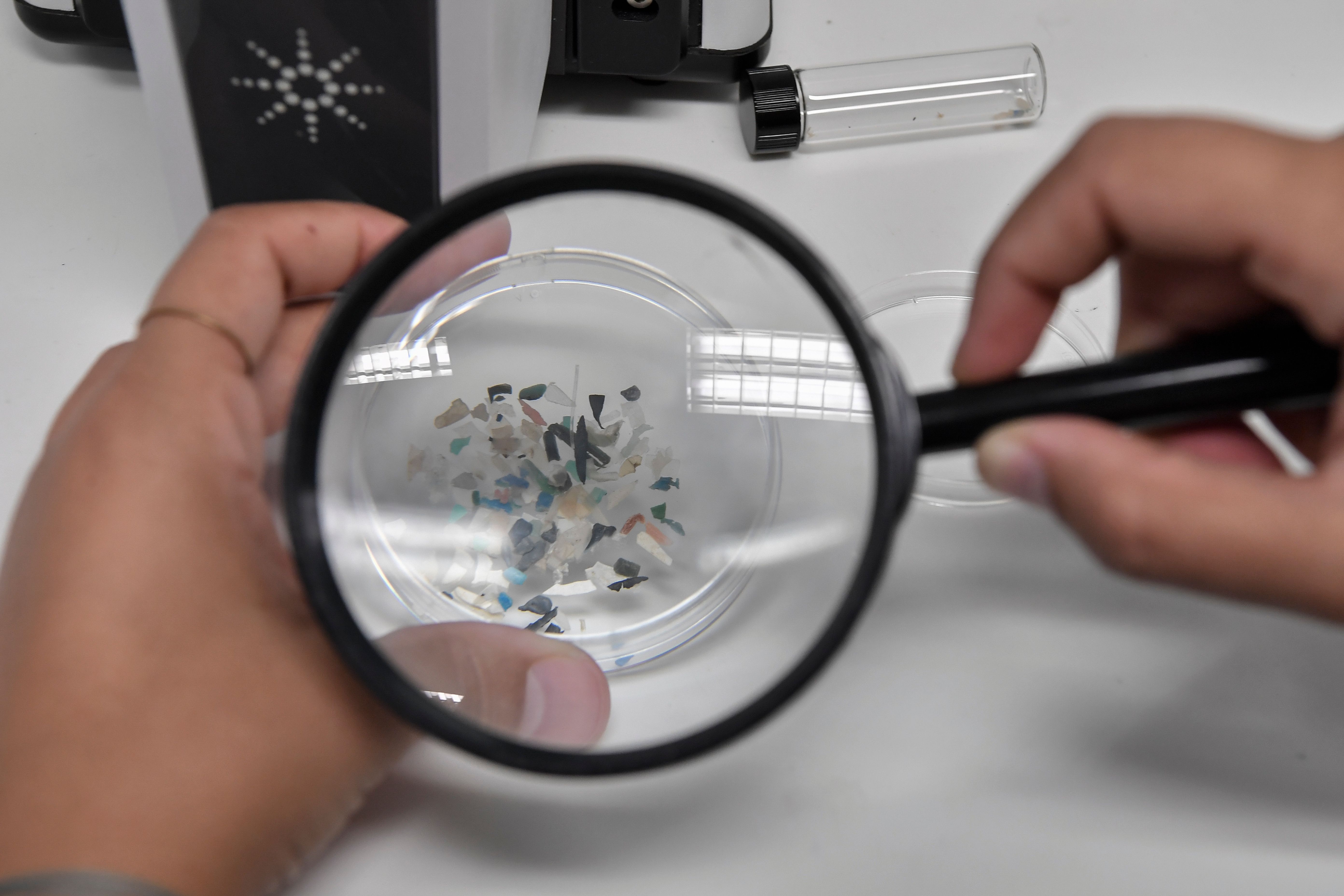Plastic pollution accumulating in human organs, study finds
Scientists say the tiny particles may increase the risk of infertility and cancer

Potentially deadly particles of plastic chemicals used in products including food packaging and mobile phones have been found for the first time in major human organs, a new study warns.
US researchers analysed 47 samples from a tissue bank originally established to study neurodegenerative conditions such as Alzheimer’s disease. All of the samples - which included tissue taken from kidneys, livers, lungs and spleens - contained traces of micro- and nano-plastics, which have been linked to an increased risk of cancer and other health conditions.
Microplastics “are typically less than 0.2in (5 mm) across, but so-called nanoplastic particles can be as small as a fiftieth of the width of a human hair”, according to Daily Mail.
The Week
Escape your echo chamber. Get the facts behind the news, plus analysis from multiple perspectives.

Sign up for The Week's Free Newsletters
From our morning news briefing to a weekly Good News Newsletter, get the best of The Week delivered directly to your inbox.
From our morning news briefing to a weekly Good News Newsletter, get the best of The Week delivered directly to your inbox.
Previous research has found that “microplastic particles had passed through the digestive systems of people across the globe”, says The Times. But the new study is the first to show that the plastics can also accumulate within human organs.
Presenting their results yesterday at the American Chemical Society Fall 2020 Virtual Meeting, the scientists revealed that the particles found included polycarbonate, polyethylene and polyethylene terephthalate.
Polycarbonate “is used to make laptop and mobile phone cases, CDs, DVDs and safety glass”, while polyethylene is in “everything from shopping bags and plastic wrap to drain pipes and bullet proof vests”, the Mail reports.
“Meanwhile, polyethylene terephthalate - commonly known as PET - is used to make clothing fibres, plastic bottles and food containers.”
A free daily email with the biggest news stories of the day – and the best features from TheWeek.com
The team also found that all of the organ samples contained bisphenol A (BPA), “a common plastic ingredient that has been linked to fertility problems”, adds the i news site.
“We never want to be alarmist but it is concerning that these non-biodegradable materials can enter and accumulate in human tissues, and we don’t know the possible health effects,” said researcher Varun Kelkar, of the University of Illinois.
Study co-author Charles Rolsky, of Arizona State University, added: “There’s evidence that plastic is making its way into our bodies but very few studies have looked for it. At this point, we don’t know whether this plastic is just a nuisance or whether it represents a human health hazard.
“You can find plastics contaminating the environment at virtually every location on the globe, and in a few short decades we’ve gone from seeing plastic as a wonderful benefit to considering it a threat.”
-
 Political cartoons for January 4
Political cartoons for January 4Cartoons Sunday's political cartoons include a resolution to learn a new language, and new names in Hades and on battleships
-
 The ultimate films of 2025 by genre
The ultimate films of 2025 by genreThe Week Recommends From comedies to thrillers, documentaries to animations, 2025 featured some unforgettable film moments
-
 Political cartoons for January 3
Political cartoons for January 3Cartoons Saturday's political cartoons include citizen journalists, self-reflective AI, and Donald Trump's transparency
-
 How Bulgaria’s government fell amid mass protests
How Bulgaria’s government fell amid mass protestsThe Explainer The country’s prime minister resigned as part of the fallout
-
 Femicide: Italy’s newest crime
Femicide: Italy’s newest crimeThe Explainer Landmark law to criminalise murder of a woman as an ‘act of hatred’ or ‘subjugation’ but critics say Italy is still deeply patriarchal
-
 Brazil’s Bolsonaro behind bars after appeals run out
Brazil’s Bolsonaro behind bars after appeals run outSpeed Read He will serve 27 years in prison
-
 Americans traveling abroad face renewed criticism in the Trump era
Americans traveling abroad face renewed criticism in the Trump eraThe Explainer Some of Trump’s behavior has Americans being questioned
-
 Nigeria confused by Trump invasion threat
Nigeria confused by Trump invasion threatSpeed Read Trump has claimed the country is persecuting Christians
-
 Sanae Takaichi: Japan’s Iron Lady set to be the country’s first woman prime minister
Sanae Takaichi: Japan’s Iron Lady set to be the country’s first woman prime ministerIn the Spotlight Takaichi is a member of Japan’s conservative, nationalist Liberal Democratic Party
-
 Russia is ‘helping China’ prepare for an invasion of Taiwan
Russia is ‘helping China’ prepare for an invasion of TaiwanIn the Spotlight Russia is reportedly allowing China access to military training
-
 Interpol arrests hundreds in Africa-wide sextortion crackdown
Interpol arrests hundreds in Africa-wide sextortion crackdownIN THE SPOTLIGHT A series of stings disrupts major cybercrime operations as law enforcement estimates millions in losses from schemes designed to prey on lonely users